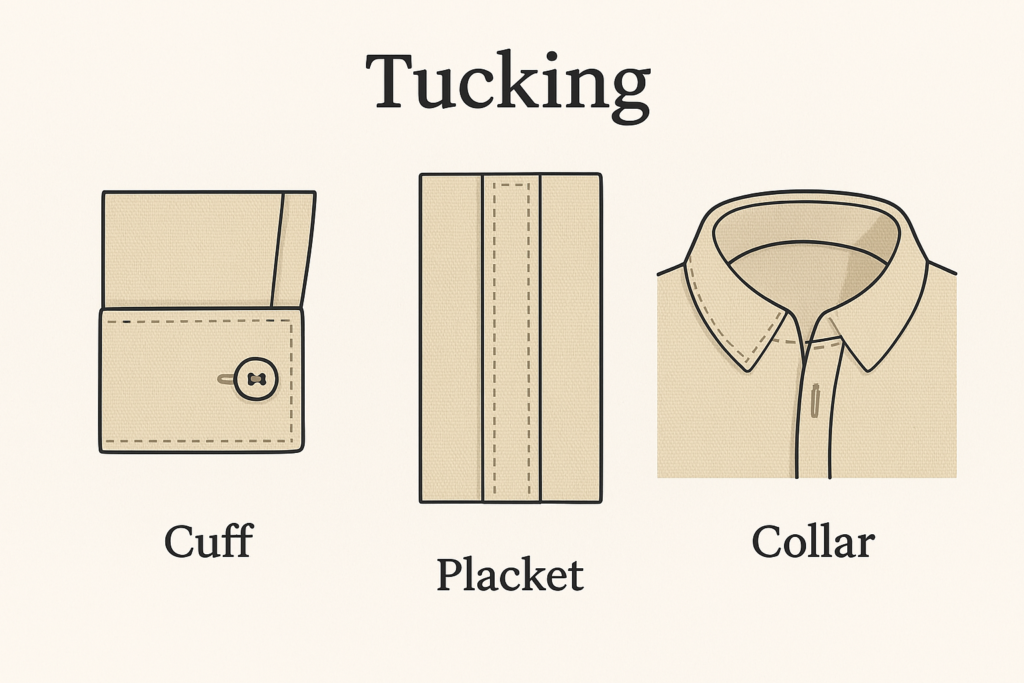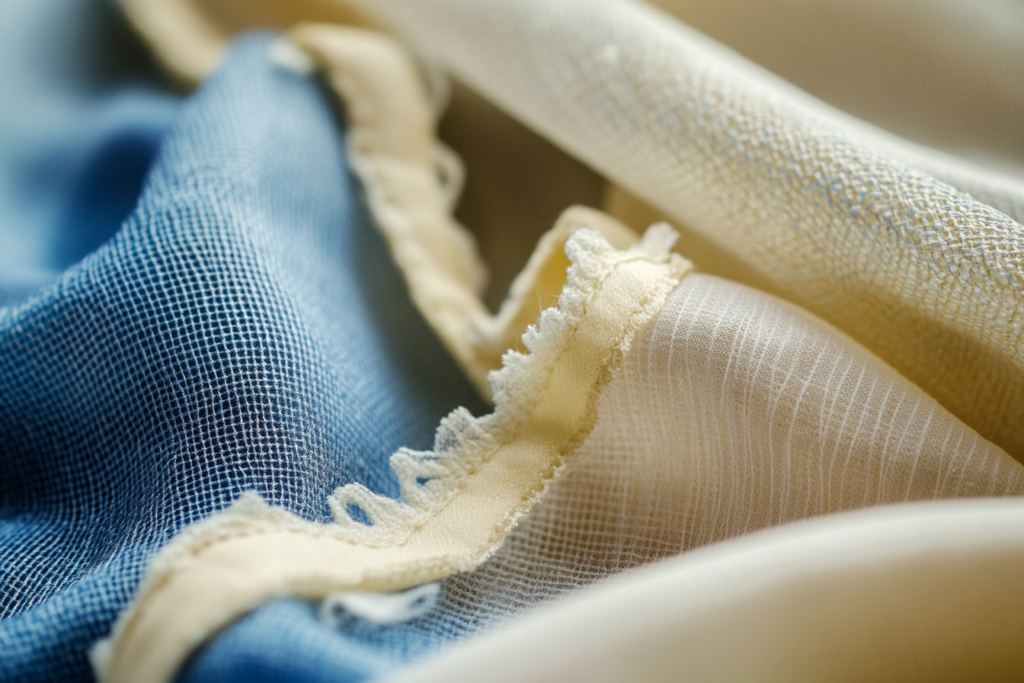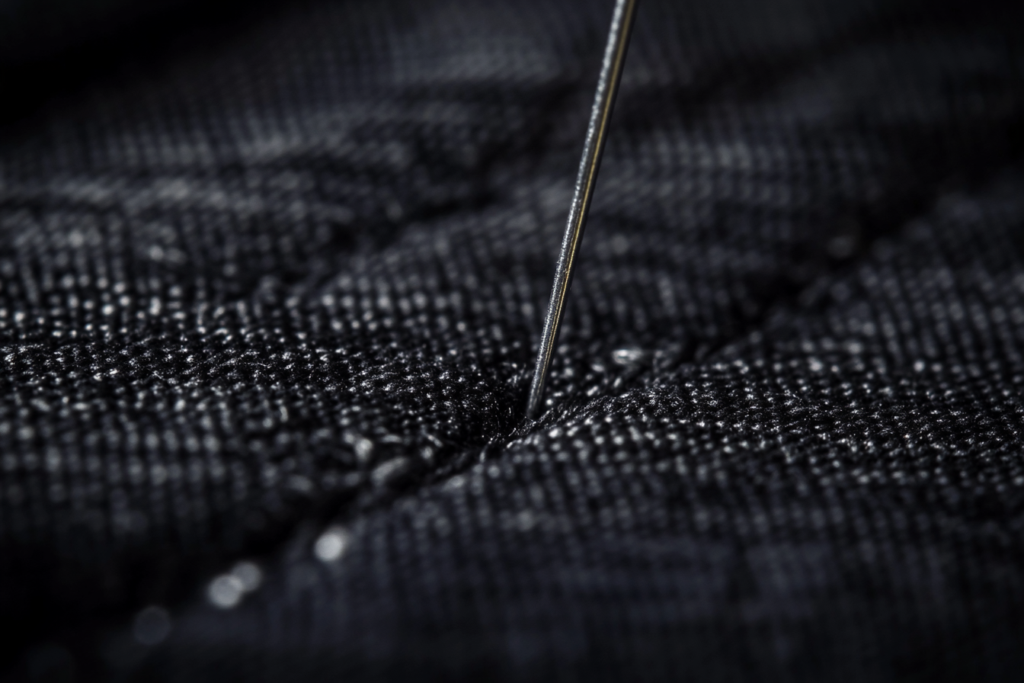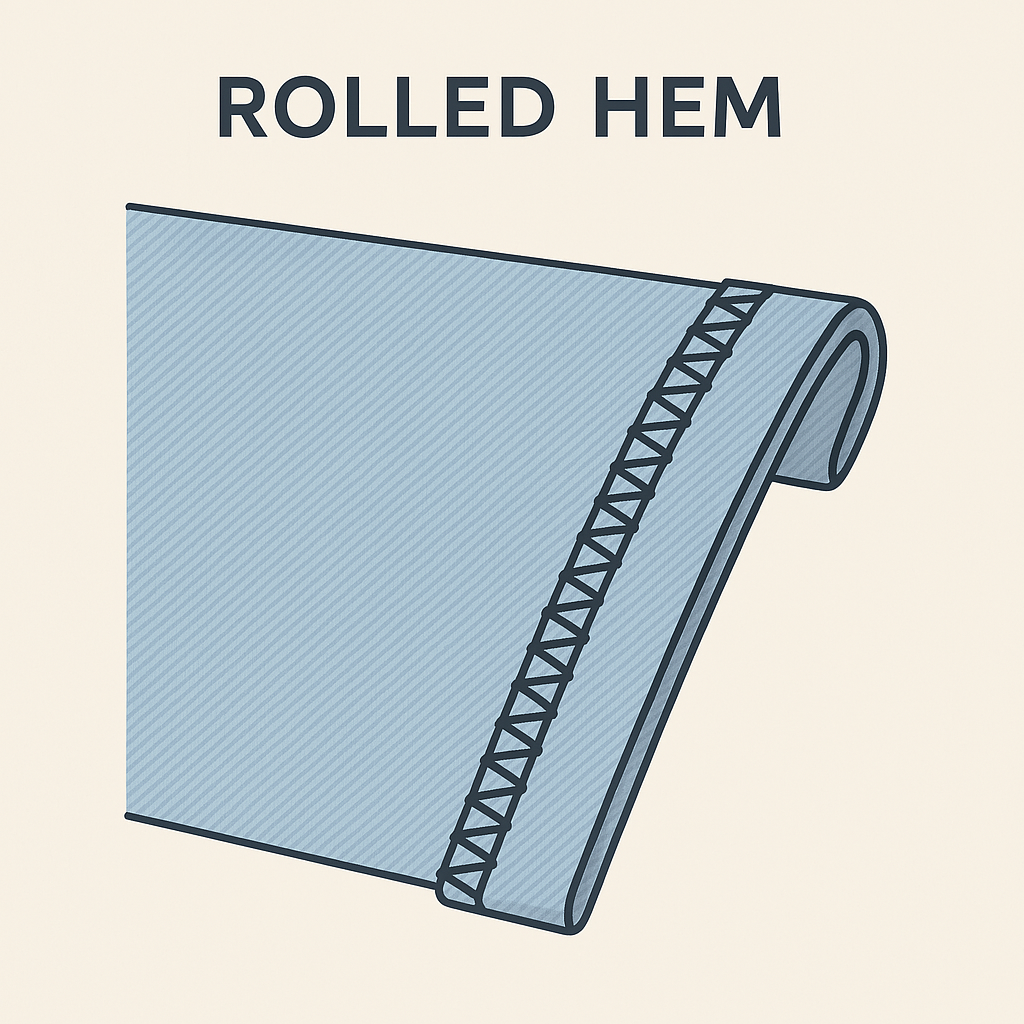Tucking in Garment Construction: Finished Openings for Cuffs, Collars & Plackets
🧵 What Is Tucking?
In garment construction, tucking refers to the creation of a finished opening, often seen on shirt cuffs, sleeve ends, or the center front of blouses and shirts. It involves turning and finishing fabric edges at an opening where closures—such as buttons or snaps—will be applied.
Unlike side slits, which are open for movement and styling, tucking forms a structured closure point—used to secure or overlap a garment section, typically where functional access is needed.
✂️ Tucking vs. Slits
| Feature | Tucking | Side Slit |
|---|---|---|
| Purpose | Functional opening with closure | Ventilation or ease of movement |
| Closure | Requires buttons, snaps, etc. | Usually open, no fastener |
| Common Location | Cuffs, shirt fronts, collars | Skirt sides, tunics, long tops |
| Finish | Folded & stitched edges | Bound or overlocked edge |
📌 Tucking is not about folding pleats—it’s about constructing a neat, accessible garment opening.
🔧 Tucking Construction Details
- Fabric is folded at the opening edge
- Seam allowances are pressed, turned, and stitched for a clean finish
- The tuck may form a placket, cuff, or center front panel
- Fasteners like buttons, hooks, or snaps are added for closure
- May replace zippers in simple or casual garments
🧷 Tucking is commonly seen in shirt sleeves, polo-style necklines, or Henley fronts.
👗 Garment Use Table for Tucking
| Garment Area | Tucking Use | Closure Used | Fabric Type | Notes |
|---|---|---|---|---|
| Shirt Sleeve Cuffs | Finished Cuff Opening | Button or Snap | Cotton / Poplin | Folded placket + matching cuff |
| Front Shirt Placket | Center Front Access | Buttons / Snaps | Linen / Chambray | Replaces zipper; decorative potential |
| Polo Collars | Neck Tucking | Button / No Closure | Piqué Knit | Often folded and bar-tacked |
| Blouse Neck Openings | Hidden Front Tuck | Hook, Button | Silk / Rayon | Clean, discreet entry |
| Tunic Hem Side | Not Considered Tucking | No closure | Woven / Knit blend | Considered a slit, not a tuck |
🪡 Best Practices for Sewing Tucks
✔️ Use interfacing to reinforce areas that will hold buttons or snaps
✔️ Ensure folds are precise and evenly pressed
✔️ Use a placket pattern if needed for clean, repeatable tucks
✔️ Align topstitching carefully for professional appearance
✔️ Avoid bulky fabric layers at corners—clip and trim as needed
🌟 Benefits of Tucking
✔️ Allows for easy entry and closure of a garment
✔️ Replaces the need for zippers in casualwear
✔️ Provides a tailored, clean look to openings
✔️ Works for both structured and relaxed garments
✔️ Enhances the fit and usability of sleeves and necklines
📌 Summary
Tucking is a fundamental construction technique for creating clean, finished openings in garments, especially on shirt cuffs, necklines, and center fronts. Paired with fasteners like buttons or snaps, tucks provide both functionality and style, helping the garment open and close comfortably while maintaining a polished look. Unlike slits, which remain open, tucks are enclosed and closed, making them essential in shirtmaking and casual garment design.




